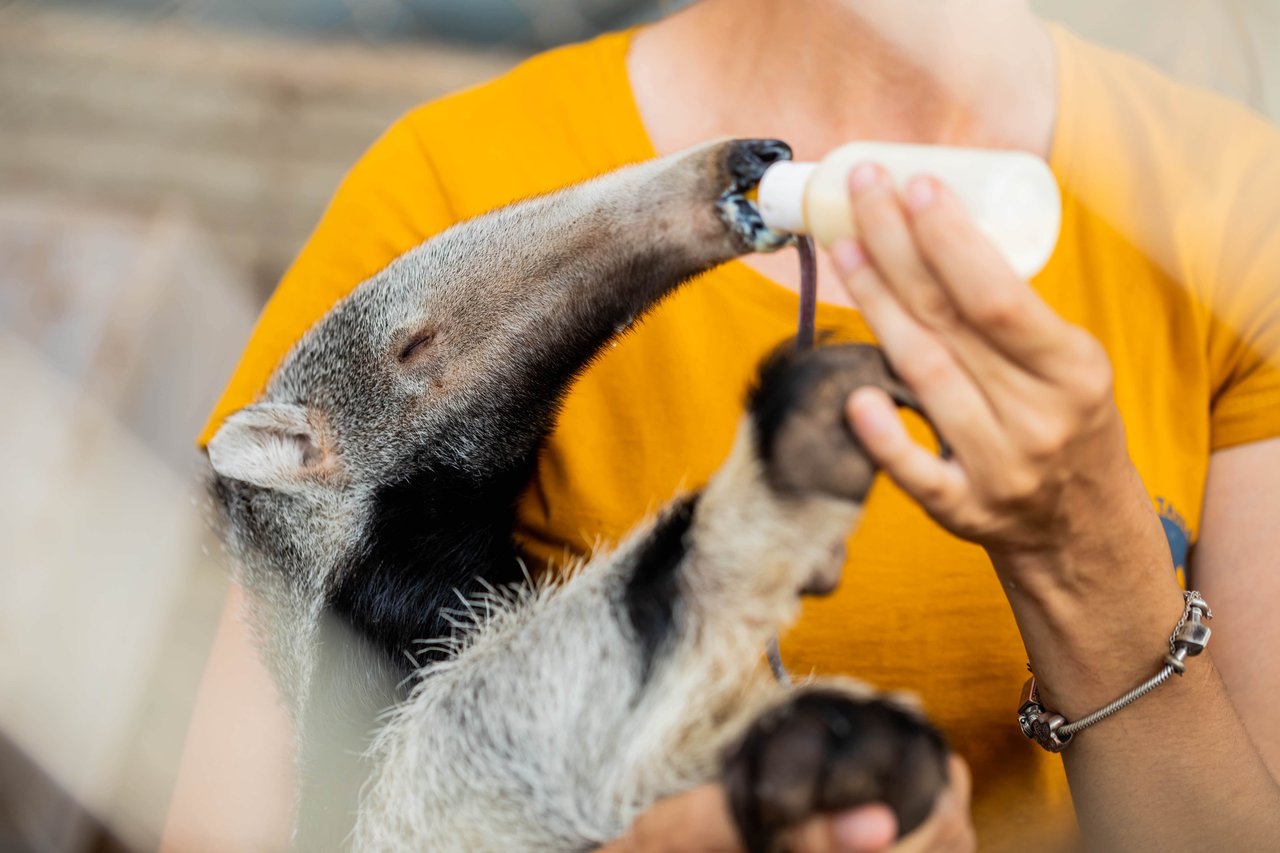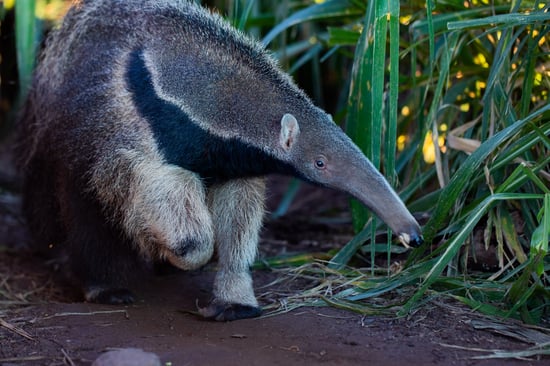Donate £10
A donation of £10 could help provide food to orphaned anteaters, to help them regain their strength.

Brazil is home to some of the most unique and threatened wildlife on Earth. But as deforestation, wildfires, and habitat destruction continue to rise as a result of industrial farming, countless wild animals like giant anteaters are left injured, orphaned, or displaced.
A donation of £10 could help provide food to orphaned anteaters, to help them regain their strength.
A donation of £20 could help pay for radio collars so that staff can keep a protective eye on the anteaters once they’ve been released back into the wild..
A donation of £30 could help equip emergency teams with the resources they need to respond quickly to save anteaters in danger.
Every year, wildfires sweep across Brazil’s Cerrado and Pantanal regions—scorching the earth, killing countless animals, and leaving survivors burned, orphaned, and alone. Among them are giant anteaters, already at risk from habitat loss, traffic collisions, and hunting.
In collaboration with The Tamanduá Institute, we are providing life-saving care for several giant anteaters impacted by the fires in the Pantanal, the world’s largest tropical wetland. Their dedicated orphanage, 'Orfãos do Fogo' – Orphans of the Fire – was established to rehabilitate and return orphaned anteaters to the wild. There, anteaters receive the care and time they need to recover, while being supported to regain the essential instincts and behaviours necessary for survival once released.
Joey
Joey was found entirely alone in the Pantanal. He was far too young to survive alone, but with round-the-clock care, he grew stronger each day. Joey has since been released into protected wild habitat, where he’s learning to live independently.
Cecilia
Cecilia was found near her mother’s lifeless body after fire tore through their home. She had painful burns on her snout and paws after escaping the flames. She spent months in recovery, slowly regaining her strength and confidence. Today, she’s back in her natural habitat, safely released into an area where the forest is beginning to heal.
Tunga
Tunga was found injured near a highway, likely after fleeing a fire that left her disoriented and afraid. Her recovery took time, but with care and patience, she healed. Tunga now lives in a monitored wild area, where she can move through the landscape at her own pace.
Darlan
Darlan was rescued in critical condition—dehydrated, weak, and with scorched claws from crossing smouldering ground. He was gently nursed back to health and slowly regained his strength. Now, Darlan is back in the wild, in a protected area where he can dig, forage, and rest without fear.
Fires continue to ravage the wild habitats of giant anteaters, putting their survival at risk. Emergency response teams are on the front lines, not only managing the crisis but also providing vital care to injured or displaced anteaters. Their efforts are crucial in ensuring these animals recover and are reintroduced to the wild.

Help equip these teams with the resources they need to respond quickly, providing essential aid to save these iconic animals and support their recovery and survival.
Donate nowIf you would like to donate over the phone, please call our Community & Care team on:
0800 316 9966
(Monday to Friday from 10am to 2pm)
We will use your donation where the need is greatest to protect animals, like those featured in this appeal, from cruelty and suffering.
Image credits: World Animal Protection / Noelly Castro